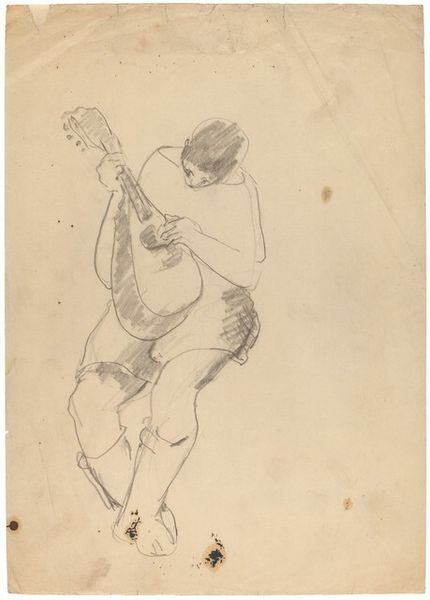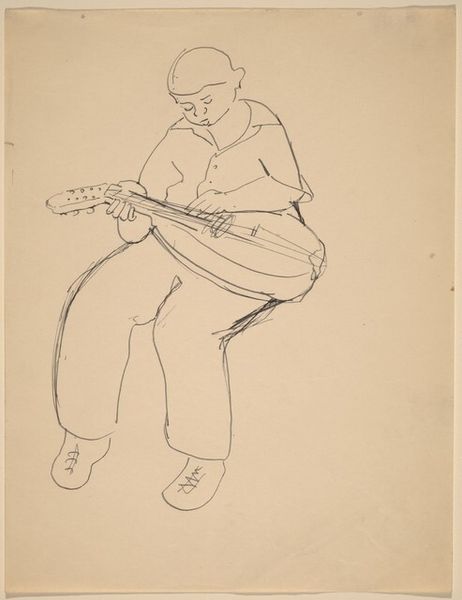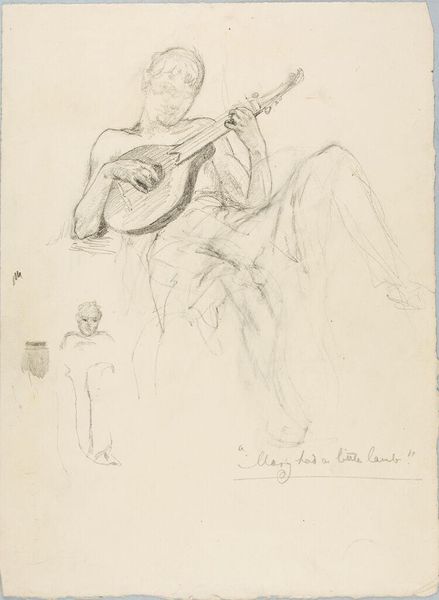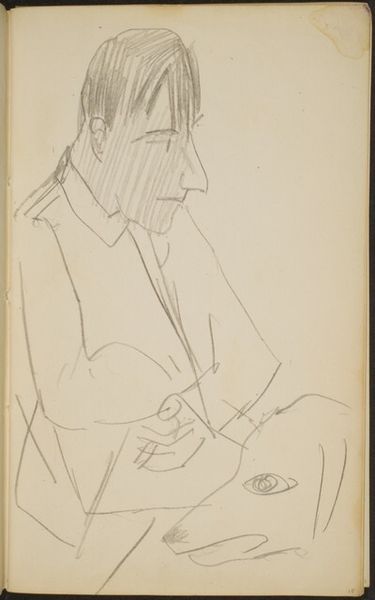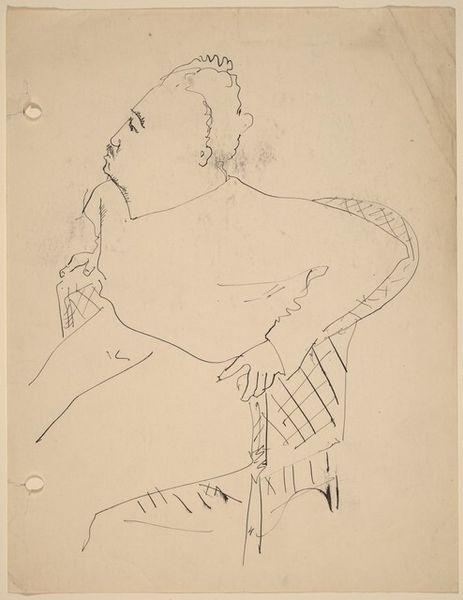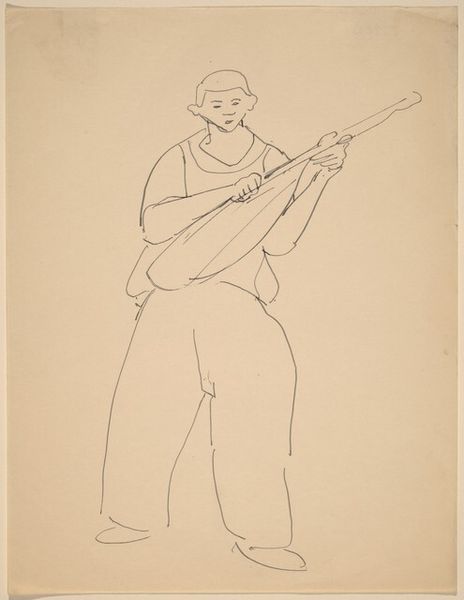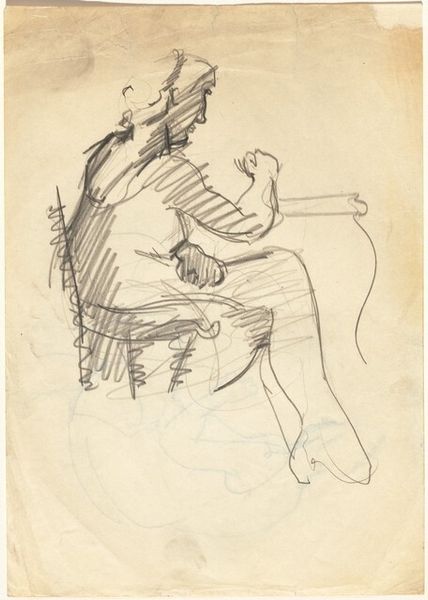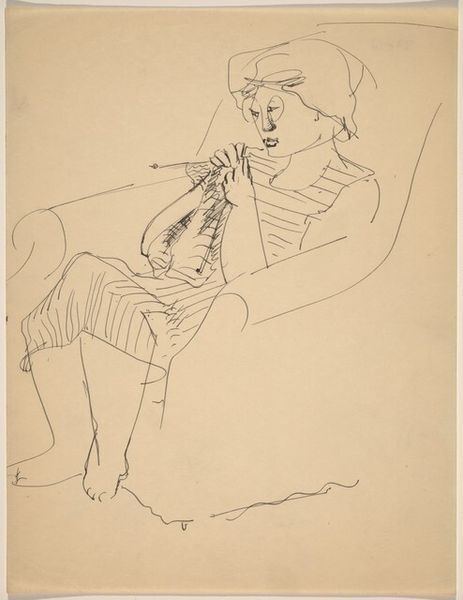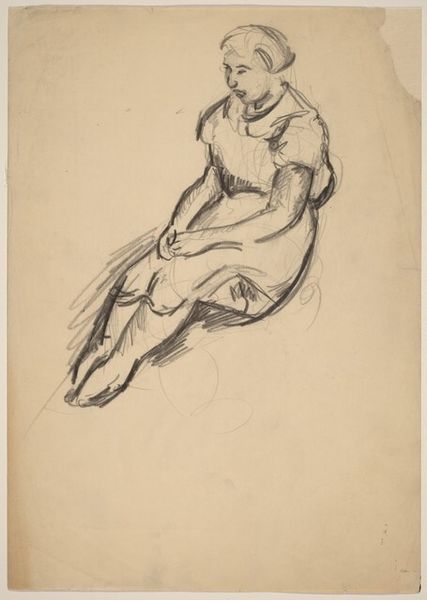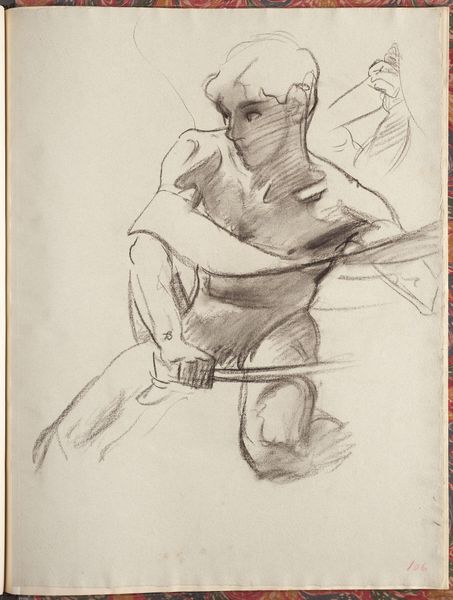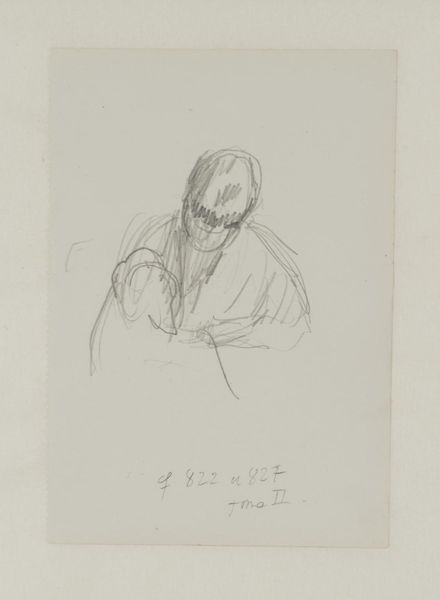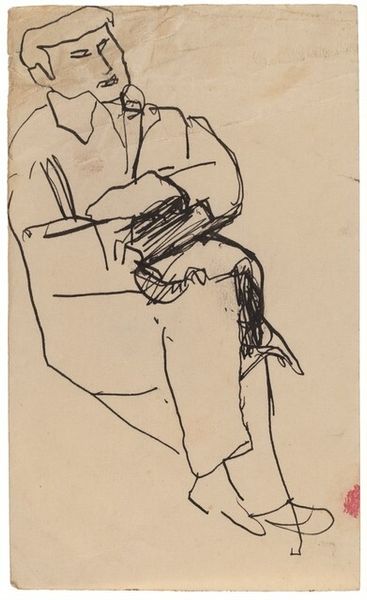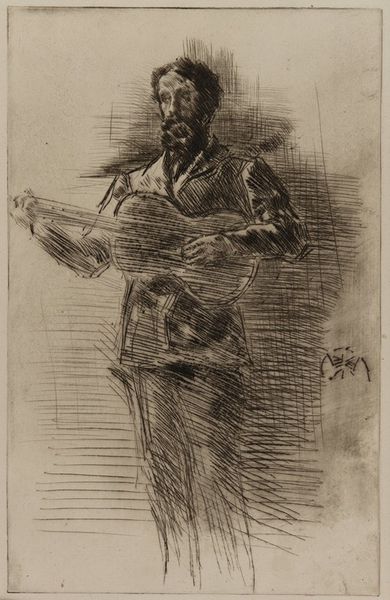
drawing, ink
#
portrait
#
drawing
#
ink drawing
#
figuration
#
ink
#
line
Dimensions: overall: 30.4 x 21.6 cm (11 15/16 x 8 1/2 in.)
Copyright: National Gallery of Art: CC0 1.0
Curator: Rothko? That's… different. The gallery is showing a little-seen drawing called "Figure Playing a Lute." It's, well, sparse. Editor: My first thought? Intimate. There's a quiet intensity about this simple ink drawing. A lute player caught in a private moment, almost hunched over their instrument, absorbed in melody. You can feel the stillness, almost hear the music that is suggested in the work. Curator: Sparse is…diplomatic. It’s more like Rothko did a doodle during a very boring phone call. There's a beautiful sense of uncertainty, wouldn’t you agree? Like he's only *sort of* decided on what this lute player even *is*. The face! There is no face! It’s incredibly funny in its awkwardness. Editor: Perhaps the face is internal, an expression of concentration on the instrument? There’s a power in this absence. Think about the act of viewing: without prescribed identity we are invited to project, or to remember what a musician’s world looks like when it involves deep and utter immersion in one’s practice. We need not look further than marginalized groups, where such work ethic and dedication goes unnoticed or unacknowledged in Western spheres. In a space for memory, perhaps we’ve found more universality than we anticipated. Curator: True, that space for projection. I dig that! He leaves space. Like, “Hey, YOU figure out who this person is and what they mean!” I’m wondering though, did Rothko even *like* music? Maybe he just liked the *idea* of music. The drawing is more about form and suggestion than any accurate depiction of an instrument or a person, it's kind of punk rock! Editor: And that rebellion against the aesthetic norms of figuration perhaps speaks to a broader societal tension. It is worth thinking, too, about what role visual minimalism, broadly, has played in different communities or sub-groups whose voices historically remain outside institutional dialogue. It’s like refusing the visual opulence of the ruling classes or Western fine art. A visual stripping-away feels powerful here. Curator: See? This awkward doodle made you go sociological! Editor: Well, maybe your "doodle" has unlocked something.
Comments
No comments
Be the first to comment and join the conversation on the ultimate creative platform.
